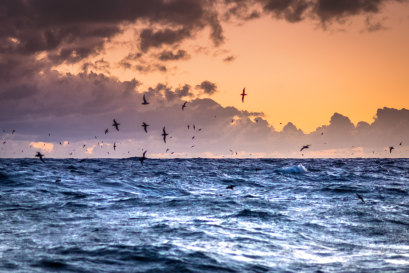This was published 1 year ago
Why so many dead birds are being washed up on Australian beaches
By Bianca Hall
Tens of thousands of dead and dying birds are washing up along the eastern seaboard after a “mass mortality” of migratory short-tailed shearwaters.
Authorities on the alert for the deadly H5N1 strain of bird flu have tested the dead shearwaters, also known as muttonbirds, in NSW and Victoria for avian influenza, but have so far found no sign.

Shearwaters travel an extraordinary 16,000 kilometres to get from the Bering Sea near Alaska to Australia.
Australia is the only continent on which H5N1 – which has spread to wild bird populations and mammals – has not been found.
Experts say the most likely source of infection in Australia could be the spring migration of birds from South-East Asia and have warned people not to handle dead birds without wearing gloves.
A spokeswoman for Phillip Island Nature Parks, home to the largest Australian population of shearwaters, said: “Events such as these occur occasionally when foraging conditions are not favourable and birds cannot find enough food, and we suspect starvation is the likely cause.”
Sean Dooley, senior public relations advisor for Birdlife Australia, said seabird “wrecks” – or mass mortalities after migration – were happening more frequently.
“Even without avian influenza, there are concerns that we’re seeing more frequent and larger-scale wrecks happening,” he said.
“It’s a bit like coral reef bleaching in that it used to happen once every couple of decades or so in terms of large numbers, but it’s happening or more frequently in the last 10 years or so.”
The federal Department of Agriculture, Fisheries and Forestry described the wreck as a “natural event” but urged people to be particularly vigilant given the risk of avian flu entering the country.
“These mass mortalities are considered natural events; a by-product of long migration, starvation and exhaustion, exacerbated by severe weather conditions,” a department spokeswoman said.
A spokesman for the NSW Department of Environment and Heritage said shearwaters migrate along the east coast of Australia in October and November, and the number of birds stranding was expected to decline this month as the migration ends.
“Sustained onshore winds are accentuating the annual, natural mortality of shearwaters, also known as muttonbirds, currently being found on NSW beaches,” he said.
“During the migration, the birds endure storms, gales and food shortages. These exhausting journeys often mean many shearwaters die, sometimes washing up on beaches in large numbers. While confronting, this unfortunate event is a natural occurrence.”
Last year a record-breaking 700,000 short-tailed shearwater chicks took to the sky, leaving their sandy burrows on Phillip Island and flying 16,000 kilometres to Alaska in late April or early May.
This masthead reported last month that environmental officers will take the extraordinary step of vaccinating wild populations of endangered animals against an inevitable outbreak of deadly bird flu, as well as breeding captive “insurance” populations of threatened species and collecting carcasses to limit the spread of the disease.
If you find more than five sick or dead wild birds, avoid contact with them, keep pets away, record the sighting and report it to the Emergency Animal Disease Hotline on 1800 675 888.
Get to the heart of what’s happening with climate change and the environment. Our fortnightly Environment newsletter brings you the news, the issues and the solutions. Sign up here.